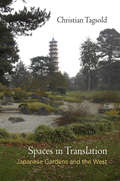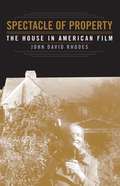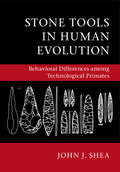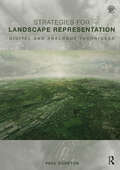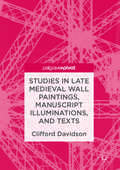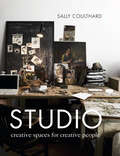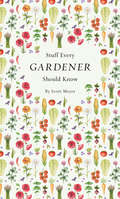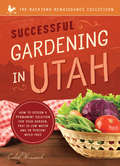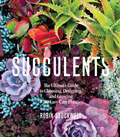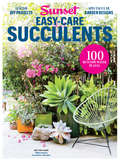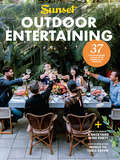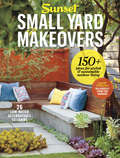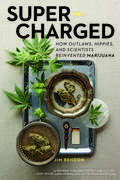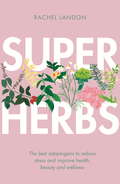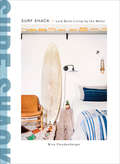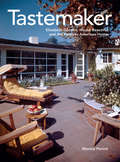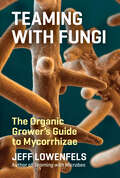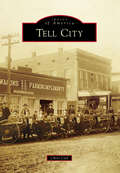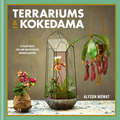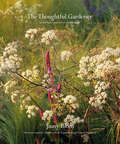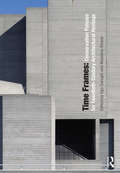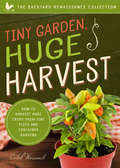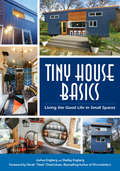- Table View
- List View
Spaces in Translation: Japanese Gardens and the West
by Christian TagsoldOne may visit famous gardens in Tokyo, Kyoto, or Osaka—or one may visit Japanese-styled gardens in New York, San Francisco, Philadelphia, Berlin, London, Paris, São Paulo, or Singapore. We often view these gardens as representative of the essence of Japanese culture. Christian Tagsold argues, however, that the idea of the Japanese garden has less do to with Japan's history and traditions, and more to do with its interactions with the West.The first Japanese gardens in the West appeared at the world's fairs in Vienna in 1873 and Philadelphia in 1876 and others soon appeared in museums, garden expositions, the estates of the wealthy, and public parks. By the end of the nineteenth century, the Japanese garden, described as mystical and attuned to nature, had usurped the popularity of the Chinese garden, so prevalent in the eighteenth century. While Japan sponsored the creation of some gardens in a series of acts of cultural diplomacy, the Japanese style was interpreted and promulgated by Europeans and Americans as well. But the fashion for Japanese gardens would decline in inverse relation to the rise of Japanese militarism in the 1930s, their rehabilitation coming in the years following World War II, with the rise of the Zen meditation garden style that has come to dominate the Japanese garden in the West.Tagsold has visited over eighty gardens in ten countries with an eye to questioning how these places signify Japan in non-Japanese geographical and cultural contexts. He ponders their history, the reasons for their popularity, and their connections to geopolitical events, explores their shifting aesthetic, and analyzes those elements which convince visitors that these gardens are "authentic." He concludes that a constant process of cultural translation between Japanese and Western experts and commentators marked these spaces as expressions of otherness, creating an idea of the Orient and its distinction from the West.
Spectacle of Property: The House in American Film
by John David RhodesMuch of our time at the movies is spent in other people’s homes. Cinema is, after all, often about everyday life. Spectacle of Property is the first book to address the question of the ubiquitous conjuncture of the moving image and its domestic architecture. Arguing that in cinema we pay to occupy spaces we cannot occupy, John David Rhodes explores how the house in cinema both structures and criticizes fantasies of property and ownership.Rhodes tells the story of the ambivalent but powerful pleasure we take in looking at private property onscreen, analyzing the security and ease the house promises along with the horrible anxieties it produces. He begins by laying out a theory of film spectatorship that proposes the concept of the “spectator-tenant,” with reference to films such as Gone with the Wind and The Magnificent Ambersons. The book continues with three chapters that are each occupied with a different architectural style and the films that make use of it: the bungalow, the modernist house, and the shingle style house. Rhodes considers a variety of canonical films rarely analyzed side by side, such as Psycho in relation to Grey Gardens and Meet Me in St. Louis. Among the other films discussed are Meshes of the Afternoon, Mildred Pierce, A Star Is Born, Killer of Sheep, and A Single Man.Bringing together film history, film theory, and architectural history as no book has to date, Spectacle of Property marks a new milestone in examining cinema’s relationship to realism while leaving us vastly more informed about, if less at home inside, the houses we occupy at the movies.
Starting & Running a Marijuana Business (Idiot's Guides)
by Debby GoldsberryThe most comprehensive and easy-to-understand guide to starting and running a marijuana business.Legal marijuana is one of the fastest growing industries on the planet, and aspiring entrepreneurs are chomping at the bit to get in on the "green rush". However, while starting any new business can be challenging, starting one in an emerging field with a new and changing legal landscape can be downright daunting. But whether your ambition is to start a grow facility or cannabis dispensary, Idiot's Guides: Starting & Running a Marijuana Business will help you navigate this complex industry with careful planning and special considerations to make the most of your new venture.In this comprehensive overview, you get:• Best practices for securing locations and permits, dealing with the financial restraints from the U.S. Government, and managing all of the day-to-day aspects of running a business.• Insights on the legal challenges from state-to-state and how to navigate them to maximize earning potential. • Expert advice on locating cultivation/dispensary sites, creating a business plan, securing finances, training staff, dealing with security measures, paying taxes, and offering medical patient counseling. • Marketing strategies to ensure the business grows and operates legally and effectively.• Checklists for any owner and manager to incorporate in their business and training to ensure all systems are covered.
Stone Tools in Human Evolution
by Shea John J.In Stone Tools in Human Evolution, John J. Shea argues that over the last three million years hominins' technological strategies shifted from occasional tool use, much like that seen among living non-human primates, to a uniquely human pattern of obligatory tool use. Examining how the lithic archaeological record changed over the course of human evolution, he compares tool use by living humans and non-human primates and predicts how the archaeological stone tool evidence should have changed as distinctively human behaviors evolved. Those behaviors include using cutting tools, logistical mobility (carrying things), language and symbolic artifacts, geographic dispersal and diaspora, and residential sedentism (living in the same place for prolonged periods). Shea then tests those predictions by analyzing the archaeological lithic record from 6,500 years ago to 3. 5 million years ago.
Strategies for Landscape Representation: Digital and Analogue Techniques
by Paul CuretonStrategies for Landscape Representation discusses a variety of digital and analogue production techniques for the representation of landscape at multiple scales. Careful consideration is required to represent time, and to ensure accuracy of representation and evaluation in the landscape.Written as a guide for making appropriate selection of a wide variety of visualisation tools for students and built environment professionals with an interest in landscape, the book charts emerging technologies and historical contexts whilst also being relevant to landscape legislation such as Building Information Modelling (BIM) and Landscape Assessment. This book is an innovation-driven text that encourages readers to make connections between software, technology and analogue modes. The management, choice and combination of such modes can arguably narrow the unknown of landscape character, address the issues of representing time and change in landscape and engage and represent communities’ perceptions and experience of landscape.Showcasing international examples from landscape architecture, planning, urban design and architecture, artists, visualisers, geographers, scientists and model makers, the vitality of making and intrinsic value of representational work in these processes and sites is evidenced. An accompanying companion website provides access to original source files and tutorials totalling over a hundred hours in mapping and GIS, diagrams and notation, photomontage, 3D modelling and 3D printing.
Studies in Late Medieval Wall Paintings, Manuscript Illuminations, and Texts
by Clifford DavidsonThis volume is an interdisciplinary consideration of late medieval art and texts, falling into two parts: first, the iconography and context of the great Doom wall painting over the tower arch at Holy Trinity Church, Coventry, and second, Carthusian studies treating fragmentary wall paintings in the Carthusian monastery near Coventry; the devotional images in the Carthusian Miscellany; and meditation for "simple souls" in the Carthusian Nicholas Love's Mirror of the Blessed Life of Jesus Christ. Emphasis is on such aspects as memory, participative theology, devotional images, meditative practice, and techniques of constructing patterns of sacred imagery.
Studio: Creative Spaces for Creative People
by Sally CoulthardDiscover what kind of stunning spaces for creative work you can build in your own home no matter your budget with this inspirational DIY guide.Art, craft and all things homemade have never been more popular and the trend for working from home continues apace. But it can be tricky to carve out a space in your house that lets you indulge your passion or earn a living from your creativity. Studio and study spaces are special places—full of creative spirit and practical potential—and there’s never been a greater demand for a book that shows you how to carve out a corner that allows you to not only practice your craft, but inspires and facilitates the very work you create.Real-life case studies from seven different countries, ranging from crafters, writers, designers and artists, show readers just what can be achieved on every budget. Many of the studio owners featured have a dedicated and ever-expanding social media following, including fashion designers Kiel James Patrick and Sarah Vickers, woodworker Ariele Alasko, designer Sarah Sherman Samuel, fine artist Lisa Congdon and decor blogger Holly Becker.Detailed chapters outline the vital pieces needed to create a functioning and inspirational studio space, while also taking an in-depth look into different styles of studios for craft and creative activities. With Studio, Sally Coulthard shows you that spaces for creativity can be easy to make, look beautiful, and fitted into any home.Praise for Studio“A visual feast of a sourcebook . . . features real-life home offices to inspire even the most spatially challenged of us.” —Fabric magazine“A fantastic and inspiring volume.” —Holly Becker“A lovely peek into lots of different creative studios, from potters to knitters, textile designers to fine artist, and every one is a delight.” —The Women’s Room“Working from home has never been so stylish.” —Ham & High
Stuff Every Gardener Should Know
by Scott MeyerThe latest in the best-selling Stuff series, Stuff Every Gardener Should Know is the perfect pocket guide to your garden! What’s the difference between heirlooms and hybrids? How can I stop weeds from invading my flowerbeds? And what’s the best way to attract helpful, beneficial insects? All these questions and more are answered in Stuff Every Gardener Should Know—a handy little reference book that’s perfect for gardeners of all ages and experience. From the secrets of indoor seed-starting to tips for hassle free roses, this delightful companion is blooming with fun facts and helpful ideas.From the Hardcover edition.
Successful Gardening in Utah: How to Design a Permanent Solution for your Garden that is Low Water and 95 Percent Weed Free! (The Backyard Renaissance Series)
by Caleb WarnockCaleb Warnock, the author of the bestselling Backyard Renaissance Series, provides the most understandable and important look at how to garden successfully in Utah to date. Using his decades of self-sufficiency experience, Caleb makes Utah gardening simple and easy enough for anyone to have a successful harvest the pioneers would be proud of. Caleb covers:How to create a permanent solution for your garden problemsHow to have a low-water garden in one of the driest climates in the USHow to have your garden be 95 percent weed-free!
Succulents: The Ultimate Guide To Choosing, Designing, And Growing 200 Easy Care Plants (Sunset)
by Robin StockwellSUNSET Magazine presents Succulents: The Ultimate Guide To Choosing, Designing, And Growing 200 Easy Care Plants.
SUNSET Easy Care Succulents: 100 Best Low-Water Plants
by The Editors of Sunset Robin StockwellCreate a low-maintenance, high-style garden with 113 favorite plants!Want a beautiful garden that's easy to take care of, even in low-rainfall areas? Succulents are for you! And with the help of Sunset magazine, the beloved magazine of the American West, you can create a stunning no-fuss, water-wise succulent garden anywhere-using beds, borders, or containers, between pavers, or right in desert sand. Glowing photographs show off beautiful, inspiring garden creations, and a helpful illustrated guide to choosing and using succulents features 113 favorite varieties. A step-by-step guide to creating your own personal plantings includes information on designing, siting, feeding, and ongoing care. Capture the natural beauty of the West in your own garden with Sunset Easy-Care Succulents.
SUNSET Outdoor Entertaining (Sunset Special Issue Magazine)
by Erin KunkelSimple yet sophisticated ideas for entertaining under the sun and starsCelebrate casual dining at its best with SUNSET Outdoor Entertaining. Plan picnics, cocktail parties, barbecues, and much more with this this new special edition from the authority on living on the West Coast. You'll find sophisticated party planning ideas, along with dozens of recipes for drinks, appetizers, and easy entrees, all with photos, nutritional info, and step-by-step directions. Table décor, lighting, wines and cocktails, flowers-these pages are packed with creative touches designed to make every occasion more special. Interviews with professional planners and chefs like Ludo Lefebvre and Naz Deravian, taken from the pages of the magazine, reveal their exclusive tips, recipes, and ideas for the great outdoors. Inspiring yet practical, SUNSET Outdoor Entertaining makes it easy to plan the best outdoor celebrations ever no matter how great or small.
SUNSET Small Yard Makeovers (Sunset Special Issue Magazine)
by The Editors of SunsetIncludes 150+ ideas for stylish & sustainable living. Elements of a Makeover - Learn the building blocks of a sustainable garden makeover; Outdoor Living - Get inspired to create useful, inviting outdoor rooms, no matter how small your space; Stylish Edible Gardens - How to get the maximum harvest and still have a great-looking garden, Finishing Touches, Include thoughtful details to make your space comfortable, from day into night
Super-Charged: How Outlaws, Hippies, and Scientists Reinvented Marijuana
by Jim RendonMarijuana has been illegal in the United States since 1937. Yet, thanks in large part to a loosely connected underground world of breeders, dealers, and smokers, there are currently more than 2000 varieties available. And since 1996, when California first passed legislation allowing for legalized medical marijuana, the underground has slowly surfaced, pushing what was once a decentralized, lawless world closer to the corporate world of business, agriculture, and pharmaceuticals. Super-Charged gets up close and personal with the people who have transformed this controversial drug. With personalities and backgrounds as diverse as the plant itself, the growers include a former Silicon Valley software entrepreneur; third-generation Humboldt, California, growers; a publicly traded pharmaceutical company; and the famous marijuana personality Jorge Cervantes. Jim Rendon takes readers behind the scenes and into the homes and grow operations of the committed, quality-obsessed practitioners in the international underground industry responsible for creating today's super-charged cannabis. Ironically, these pioneers who built this illegal industry may one day find themselves out of business in the face of the drug's growing mainstream acceptance. Just how this could come about is part of the incredible story.
Superherbs: The best adaptogens to reduce stress and improve health, beauty and wellness
by Rachel Landon'This is the herbal guide book for modern life - with easy recipes, practical tips and pearls of wisdom - it's the perfect companion to help you use powerful herbs in a modern way.' Anabel Kindersley, co-founder of Neal's Yard RemediesTurmeric, matcha, bee pollen, ashwagandha, astragalus. Often called 'nature's miracles', superherbs, or adaptogens, help the body adapt to the stresses of life, whether emotional, environmental or immune related. We've all been informed about superfoods and the nutrients they pack, but superherbs do more than deliver vitamins and nutrition - they help to improve overall health to bring the body back to equilibrium.Featuring twenty of the most easy-to-source and use adaptogens, Superherbs will teach you the history of these ancient herbs, how each can help us in mind, body, beauty and spirit, and ten ways that we can incorporate them into our lives including recipes, teas, tonics, and DIY beauty regimes. Superherbs will help you find the best ways to de-stress, relieve anxiety, reduce inflammation and so much more, all in a healthy, natural way.
Surf Shack: Laid-Back Living by the Water
by Nina Freudenberger Heather Summerville Brittany AmbridgeFor those who combed through Cabin Porn for inspiration and The New Bohemians for authenticity, here are bungalows, trailers, cabins, and beach homes where surfers retreat after a day on the waves. Peek inside the homes of longtime enthusiasts and dedicated newcomers that reflect not just a sport or passion, but also a way of life. Blake and Heather Mycoskie of TOMS, hotelier Sean MacPherson, Gypset author Julia Chaplin, and others have set up their spaces to embrace a casual ease and be the break between the waves. With vibrant photographs of design details and bright beaches—from Malibu to the Rockaways, from Japan to Australia—this book captures the soulful milieu of a lifestyle we all aspire to."Surfers are a breed onto themselves and their homes . . . Nina Freudenberger has taken a good look at not only a number of these vastly different abodes but also a quick glimpse into the particular and even peculiar lives that are lived there. Because after all, to a surfer at least, surfing is the only life." –Gerry Lopez, renowned surfer, innovator, and author of Surf is Where You Find It
Tastemaker: Elizabeth Gordon, House Beautiful, and the Postwar American Home
by Monica PenickA riveting and superbly illustrated account of the enigmatic House Beautiful editor’s profound influence on mid-century American taste From 1941 to 1964, House Beautiful magazine’s crusading editor-in-chief Elizabeth Gordon introduced and promoted her vision of “good design” and “better living” to an extensive middle-class American readership. Her innovative magazine-sponsored initiatives, including House Beautiful’s Pace Setter House Program and the Climate Control Project, popularized a “livable” and decidedly American version of postwar modern architecture. Gordon’s devotion to what she called the American Style attracted the attention of Frank Lloyd Wright, who became her ally and collaborator. Gordon’s editorial programs reshaped ideas about American living and, by extension, what consumers bought, what designers made, and what manufacturers brought to market. This incisive assessment of Gordon’s influence as an editor, critic, and arbiter of domestic taste reflects more broadly on the cultures of consumption and identity in postwar America. Nearly 200 images are featured, including work by Ezra Stoller, Maynard Parker, and Julius Shulman. This important book champions an often-neglected source—the consumer magazine—as a key tool for deepening our understanding of mid-century architecture and design.
Teaming with Fungi: The Organic Grower's Guide to Mycorrhizae (Science For Gardeners Ser.)
by Jeff LowenfelsFrom the bestselling author of Teaming with Microbes and Teaming with Nutrients Teaming with Fungi is an important guide to mycorrhizae and the role they play in agriculture, horticulture, and hydroponics. Almost every plant in a garden forms a relationship with fungi, and many plants would not exist without their fungal partners. By better understanding this relationship, gardeners can take advantage of the benefits of fungi, which include an increased uptake in nutrients, resistance to drought, earlier fruiting, and more. Learn how the fungi interact with plants and how to best to employ them in your home garden.
Tell City (Images of America)
by Chris CailFounded in 1858, Tell City is located in the rolling hills of southern Indiana, along the Ohio River between Evansville, Indiana, and Louisville, Kentucky. Carefully planned by the Swiss Colonization Society of Cincinnati, Ohio, Tell City was originally named Helvetia. To proclaim their Swiss origin and honor their hero, William Tell, the founders chose to rename the area Tell City. Tell City is known for its famous Tell City Pretzels, a tradition that dates back to 1858, and the Tell City Chair Company, a well-known manufacturer of Early American–style furniture. After the closing of the Tell City Chair Company, the city changed from a furniture-manufacturing community to a more automotive-manufacturing community, with Waupaca and ATTC Manufacturing both employing a total of 1,500 people.
Terrariums & Kokedama
by Alyson MowatTerrariums, aeriums and kokedama (Japanese for 'moss ball') have exploded in popularity and making them at home is surprisingly easy and a wonderful way to keep plants in our homes. In this inspirational guide, Alyson Mowat shares her creative ideas for greening up your home and workspace, with 20 projects to make your own botanical beauties and containers to show them off. Alyson guides you through the information and tools you'll need to help cultivate your green thumb, before sharing her tips for making your own unique containers, such as a concrete planter or kokedama tray, choosing the best plants for your space and desired effort, and even includes tips to propagate them. With names such as Through the Looking Glass, Plant-O-Saurus and Hung Up on You, the projects are fun and quirky, bringing the outside in. With Alyson's keen, stylish eye, you can create chic, low-maintenance greenery to cover your home or work.
Terrariums & Kokedama
by Alyson MowatTerrariums, aeriums and kokedama (Japanese for 'moss ball') have exploded in popularity and making them at home is surprisingly easy and a wonderful way to keep plants in our homes. In this inspirational guide, Alyson Mowat shares her creative ideas for greening up your home and workspace, with 20 projects to make your own botanical beauties and containers to show them off. Alyson guides you through the information and tools you'll need to help cultivate your green thumb, before sharing her tips for making your own unique containers, such as a concrete planter or kokedama tray, choosing the best plants for your space and desired effort, and even includes tips to propagate them. With names such as Through the Looking Glass, Plant-O-Saurus and Hung Up on You, the projects are fun and quirky, bringing the outside in. With Alyson's keen, stylish eye, you can create chic, low-maintenance greenery to cover your home or work.
The Thoughtful Gardener: An Intelligent Approach to Garden Design
by Jinny Blom“A detailed and richly illustrated account of how one of the UK’s leading practitioners approaches the art of garden design.” —Gardens IllustratedProlific designer Jinny Blom embraces a wide variety of styles, from large garden spaces to formal walled gardens and contemporary installations. What defines her work is her skill with plants and her ability to create a garden that responds to the history of the site and the wider landscape. The gardens Jinny creates are as different as their owners and their locations.In this book, Jinny shares her insight into the creative process she has developed while designing more than 250 gardens around the world. The Thoughtful Gardener contains modern takes on traditional forms, and is split into six sections: seeing, understanding, structuring, harmonizing, rooting, and liberating.All of Jinny’s gardens share a commitment to beautiful craftsmanship and considered planting. Structure and detail are important, and receive close attention. The styles vary considerably—logical, calm, beautiful, romantic, naturalistic, formal, sometimes spare—but the principles remain firm. Jinny designs for the long term, with consideration for the environment; these gardens are built to last.Reflecting Jinny’s highly individual character, there is plenty of wit and quirkiness alongside the expert knowledge, and it will appeal to the widest audience of garden lovers. Thoughtful and beautiful, yet practical and informative, this book marries artistry with functionality.Praise for The Thoughtful Gardener“The most romantic, creative person in garden design I know.” —Piet Oudolf“Jinny’s genius is to marry a beautiful vision to an extraordinary empathy with the landscape into which that vision will fit, resulting in a pastoral harmony second to none.” —Victoria, Lady Getty“The Thoughtful Gardener, at once a lavishly illustrated coffee-table tome and a friendly hands-on primer, offers a glimpse into some of the most magical gardens in the world.” —Architectural Digest“Landscaper Jinny Blom’s long-awaited book is so beautiful that you will not want to rush it. As the title suggests, there is more to this than lovely photography: the pages of The Thoughtful Gardener will stop you in your tracks and make you think about the potential of gardens, in a way that has never struck you before.” —Gardenista
Time Frames: Conservation Policies for Twentieth-Century Architectural Heritage
by Ugo Carughi Massimo VisoneTime Frames provides a reconnaissance on the conservation rules and current protection policies of more than 100 countries, with particular attention to the emerging nations and twentieth-century architecture. The contributions illustrate the critical issues related to architectural listings, with a brief history of national approaches, a linkography and a short bibliography. The book also provides a short critical lexicography, with 12 papers written by scholars and experts including topics on identities, heritages, conservation, memories and the economy. By examining the methods used to designate building as heritage sites across the continents, this book provides a comprehensive overview of current protection policies of twentieth-century architecture as well as the role of architectural history.
Tiny Garden, Huge Harvest: How to Harvest Huge Crops From Mini Plots and Container Gardens (Backyard Renaissance Collection)
by Caleb WarnockWhen you plant the right varieties of heirloom vegetables, you can harvest huge volumes of fresh food from small garden plots and container gardens. Self-sufficiency expert Caleb Warnock provides step-by-step directions for designing, planting, and harvesting a tiny garden for big harvests that can really feed your family.
Tiny House Basics: Living the Good Life in Small Spaces
by Joshua Engberg Shelley EngbergSmall, simple, sustainable: Tips and tricks for living the tiny house lifestyle! Tiny houses are skyrocketing in popularity, and in this book campers, off roaders, and tiny house living experts Shelley and Joshua Engberg show how you can join the revolution. Learn to downsize without giving up everything you hold dear—with tips on how your life can still be comfortable and entertaining in a tiny house living environment. You’ll learn about: How to maintain a good relationship in a small spacePractical downsizing for everyoneSmall space living with petsThe pros and cons of off grid living and on grid livingHow to make your small space feel bigKeeping your small space feeling fresh with practical storage solutions and design tipsEquipping your space for entertainingAccordion/bi-fold style windowsHow downsizing and simplifying your life will allow you more freedom and time
